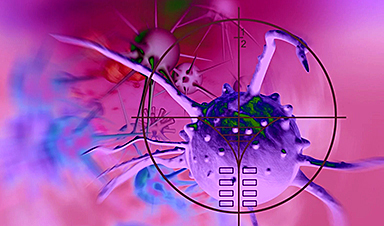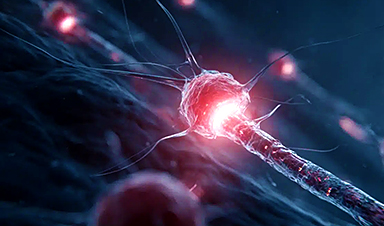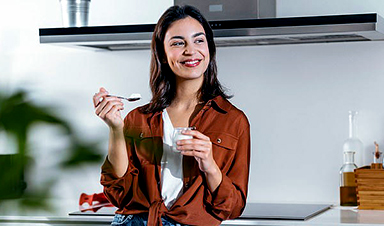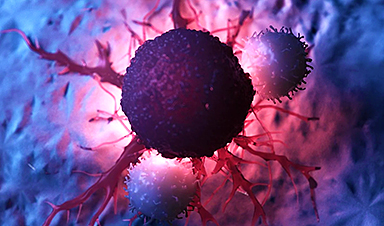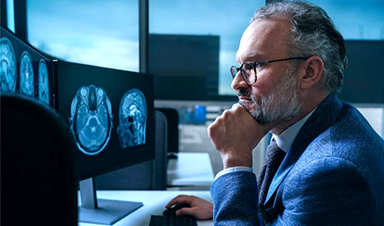Creating artificial life is a recurring theme in both science and popular literature, where it conjures images of creeping slime creatures with malevolent intentions, or super-cute designer pets. At the same time, the question arises: What role should artificial life play in our environment here on Earth, where all life forms are created by nature and have their own place and purpose?
Lou’s vision is to create viral vaccines (modified and weakened versions of a virus) and artificial life forms that can be used for diagnosing and treating diseases.
“In nature, most organisms have natural enemies, but some do not. For example, some disease-causing viruses have no natural enemy. It would be a logical step to create an artificial life form that could become an enemy to them,” he says.
Similarly, he envisions such artificial life forms can act as vaccines against viral infection and can be used as nanorobots or nanomachines loaded with medication or diagnostic elements and sent into a patient’s body.
“An artificial viral vaccine may be about 10 years away. An artificial cell, on the other hand, is on the horizon because it consists of many elements that need to be controlled before we can start building with them. But with the knowledge we have, there is, in principle, no hindrance to produce artificial cellular organisms in the future,” he says.
What are the building blocks that Lou and his colleagues in this field will use to create viral vaccines and artificial life? DNA and peptides are some of the most important biomolecules in nature, making DNA technology and peptide technology the two most powerful molecular tools in the nanotechnological toolkit today.
DNA technology provides precise control over programming, from the atomic level to the macro level, but it can only provide limited chemical functions since it only has four bases: A, C, G, and T. Peptide technology, on the other hand, can provide sufficient chemical functions on a large scale, as there are 20 amino acids to work with. Nature uses both DNA and peptides to build various protein factories found in cells, allowing them to evolve into organisms.
Elsewhere in the world, other researchers are also working on connecting DNA and peptides because this connection forms a strong foundation for the development of more advanced biological entities and life forms.
At Oxford University, researchers have succeeded in building a nanomachine made of DNA and peptides that can drill through a cell membrane, creating an artificial membrane channel through which small molecules can pass.
At Arizona State University, Nicholas Stephanopoulos and colleagues have enabled DNA and peptides to self-assemble into 2D and 3D structures.
At Northwest University, researchers have shown that microfibers can form in conjunction with DNA and peptides self-assembling. DNA and peptides operate at the nano level, so when considering the size differences, microfibers are huge.
At Ben-Gurion University of the Negev, scientists have used hybrid molecules to create an onion-like spherical structure containing cancer medication, which holds promise to be used in the body to target cancerous tumors.
“In my view, the overall value of all these efforts is that they can be used to improve society’s ability to diagnose and treat sick people. Looking forward, I will not be surprised that one day we can arbitrarily create hybrid nanomachines, viral vaccines and even artificial life forms from these building blocks to help the society to combat those difficult-to-cure diseases. It would be a revolution in health care,” says Chenguang Lou.
More information: Peptide-DNA conjugates as building blocks for de novo design of hybrid nanostructures, Cell Reports Physical Science (2023). dx.doi.org/10.1016/j.xcrp.2023.101620
News
Nano-Enhanced Hydrogel Strategies for Cartilage Repair
A recent article in Engineering describes the development of a protein-based nanocomposite hydrogel designed to deliver two therapeutic agents—dexamethasone (Dex) and kartogenin (KGN)—to support cartilage repair. The hydrogel is engineered to modulate immune responses and promote [...]
New Cancer Drug Blocks Tumors Without Debilitating Side Effects
A new drug targets RAS-PI3Kα pathways without harmful side effects. It was developed using high-performance computing and AI. A new cancer drug candidate, developed through a collaboration between Lawrence Livermore National Laboratory (LLNL), BridgeBio Oncology [...]
Scientists Are Pretty Close to Replicating the First Thing That Ever Lived
For 400 million years, a leading hypothesis claims, Earth was an “RNA World,” meaning that life must’ve first replicated from RNA before the arrival of proteins and DNA. Unfortunately, scientists have failed to find [...]
Why ‘Peniaphobia’ Is Exploding Among Young People (And Why We Should Be Concerned)
An insidious illness is taking hold among a growing proportion of young people. Little known to the general public, peniaphobia—the fear of becoming poor—is gaining ground among teens and young adults. Discover the causes [...]
Team finds flawed data in recent study relevant to coronavirus antiviral development
The COVID pandemic illustrated how urgently we need antiviral medications capable of treating coronavirus infections. To aid this effort, researchers quickly homed in on part of SARS-CoV-2's molecular structure known as the NiRAN domain—an [...]
Drug-Coated Neural Implants Reduce Immune Rejection
Summary: A new study shows that coating neural prosthetic implants with the anti-inflammatory drug dexamethasone helps reduce the body’s immune response and scar tissue formation. This strategy enhances the long-term performance and stability of electrodes [...]
Scientists discover cancer-fighting bacteria that ‘soak up’ forever chemicals in the body
A family of healthy bacteria may help 'soak up' toxic forever chemicals in the body, warding off their cancerous effects. Forever chemicals, also known as PFAS (per- and polyfluoroalkyl substances), are toxic chemicals that [...]
Johns Hopkins Researchers Uncover a New Way To Kill Cancer Cells
A new study reveals that blocking ribosomal RNA production rewires cancer cell behavior and could help treat genetically unstable tumors. Researchers at the Johns Hopkins Kimmel Cancer Center and the Department of Radiation Oncology and Molecular [...]
AI matches doctors in mapping lung tumors for radiation therapy
In radiation therapy, precision can save lives. Oncologists must carefully map the size and location of a tumor before delivering high-dose radiation to destroy cancer cells while sparing healthy tissue. But this process, called [...]
Scientists Finally “See” Key Protein That Controls Inflammation
Researchers used advanced microscopy to uncover important protein structures. For the first time, two important protein structures in the human body are being visualized, thanks in part to cutting-edge technology at the University of [...]
AI tool detects 9 types of dementia from a single brain scan
Mayo Clinic researchers have developed a new artificial intelligence (AI) tool that helps clinicians identify brain activity patterns linked to nine types of dementia, including Alzheimer's disease, using a single, widely available scan—a transformative [...]
Is plastic packaging putting more than just food on your plate?
New research reveals that common food packaging and utensils can shed microscopic plastics into our food, prompting urgent calls for stricter testing and updated regulations to protect public health. Beyond microplastics: The analysis intentionally [...]
Aging Spreads Through the Bloodstream
Summary: New research reveals that aging isn’t just a local cellular process—it can spread throughout the body via the bloodstream. A redox-sensitive protein called ReHMGB1, secreted by senescent cells, was found to trigger aging features [...]
AI and nanomedicine find rare biomarkers for prostrate cancer and atherosclerosis
Imagine a stadium packed with 75,000 fans, all wearing green and white jerseys—except one person in a solid green shirt. Finding that person would be tough. That's how hard it is for scientists to [...]
Are Pesticides Breeding the Next Pandemic? Experts Warn of Fungal Superbugs
Fungicides used in agriculture have been linked to an increase in resistance to antifungal drugs in both humans and animals. Fungal infections are on the rise, and two UC Davis infectious disease experts, Dr. George Thompson [...]
Scientists Crack the 500-Million-Year-Old Code That Controls Your Immune System
A collaborative team from Penn Medicine and Penn Engineering has uncovered the mathematical principles behind a 500-million-year-old protein network that determines whether foreign materials are recognized as friend or foe. How does your body [...]


